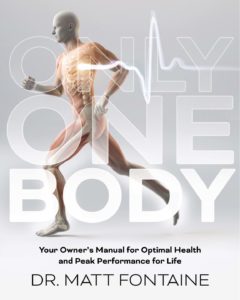22 Feb Hiatal Hernia
by Dr. Matt Fontaine Hiatal hernia is a condition where a part of your stomach pushes up and out of the esophageal hiatus in your diaphragm. This can allow food and acid to reflux up into your esophagus and result on GERD, commonly referred to as heartburn. GERD stands for gastroesophageal reflux disease. Many people are falsely diagnosed with GERD, but people who have a hiatal hernia are frequently victims of actual reflux due to the hernia. There are two types, sliding and fixed. Sliding hiatal hernias are capable of sliding up through the diaphragm causing symptoms, and can also reduce back down below the diaphragm. Fixed hernias(para-esophageal) remain herniated and can result in stangulation, which is a true medical emergency requiring surgery.  Causes, Incidence, and Risk Factors Causes are unknown, but maybe the result of weakening of the soft tissues. Incidence increases with age over 50, obesity, and smoking. What prevents reflux, GERD and heartburn? A band of muscle at the end of the esophagus called the lower esophageal sphincter normally only relaxes during swallowing to allow food to pass into the stomach. It is usually fixed firmly to the esophageal hiatus in the diaphragm and thus the contraction of the diaphragm and the sphincter act to prevent food and acid from refluxing into the lower esophagus. Another mechanism for prevention of reflux is the angle that the esophagus enters the stomach. The esophagus normally enters the stomach at a sharp angle and part esophageal and stomach wall form a valve at this angle that normally gets closed off when stomach pressure increases, such as during strenuous exercise. With a hiatal hernia, the sphincter slides up above the esophageal hiatus and the diaphragm remains in place, so there is a decrease in the normal pressure at the gastro-esophageal junction. As this junction is pulled up into the chest during swallowing, the sharp angle between the esophagus and stomach decreases, and the valve-like effect is reduced. Hiatal hernia is diagnosed by an upper GI X-Ray or endoscopy. Most cases of the sliding type hiatal hernia do not require surgery, but do require diet and behavioral changes. Treatment for these cases often requires management for GERD. Large para-esophageal hernias often do require surgical repair. Strengthen Your Diaphragm Practice deep breathing: inhale deeply for 4 seconds, hold for 7 seconds, and exhale deeply for 8 seconds. Repeat 10 times. Blow up 10 party balloons. This will work your diaphragm harder than deep breathing alone, thereby strengthening your diaphragm. A Quick Note on Diet: Avoid spicy foods. Acidic or sour foods can cause heartburn symptoms. Bananas are a good soothing food.
Causes, Incidence, and Risk Factors Causes are unknown, but maybe the result of weakening of the soft tissues. Incidence increases with age over 50, obesity, and smoking. What prevents reflux, GERD and heartburn? A band of muscle at the end of the esophagus called the lower esophageal sphincter normally only relaxes during swallowing to allow food to pass into the stomach. It is usually fixed firmly to the esophageal hiatus in the diaphragm and thus the contraction of the diaphragm and the sphincter act to prevent food and acid from refluxing into the lower esophagus. Another mechanism for prevention of reflux is the angle that the esophagus enters the stomach. The esophagus normally enters the stomach at a sharp angle and part esophageal and stomach wall form a valve at this angle that normally gets closed off when stomach pressure increases, such as during strenuous exercise. With a hiatal hernia, the sphincter slides up above the esophageal hiatus and the diaphragm remains in place, so there is a decrease in the normal pressure at the gastro-esophageal junction. As this junction is pulled up into the chest during swallowing, the sharp angle between the esophagus and stomach decreases, and the valve-like effect is reduced. Hiatal hernia is diagnosed by an upper GI X-Ray or endoscopy. Most cases of the sliding type hiatal hernia do not require surgery, but do require diet and behavioral changes. Treatment for these cases often requires management for GERD. Large para-esophageal hernias often do require surgical repair. Strengthen Your Diaphragm Practice deep breathing: inhale deeply for 4 seconds, hold for 7 seconds, and exhale deeply for 8 seconds. Repeat 10 times. Blow up 10 party balloons. This will work your diaphragm harder than deep breathing alone, thereby strengthening your diaphragm. A Quick Note on Diet: Avoid spicy foods. Acidic or sour foods can cause heartburn symptoms. Bananas are a good soothing food.




